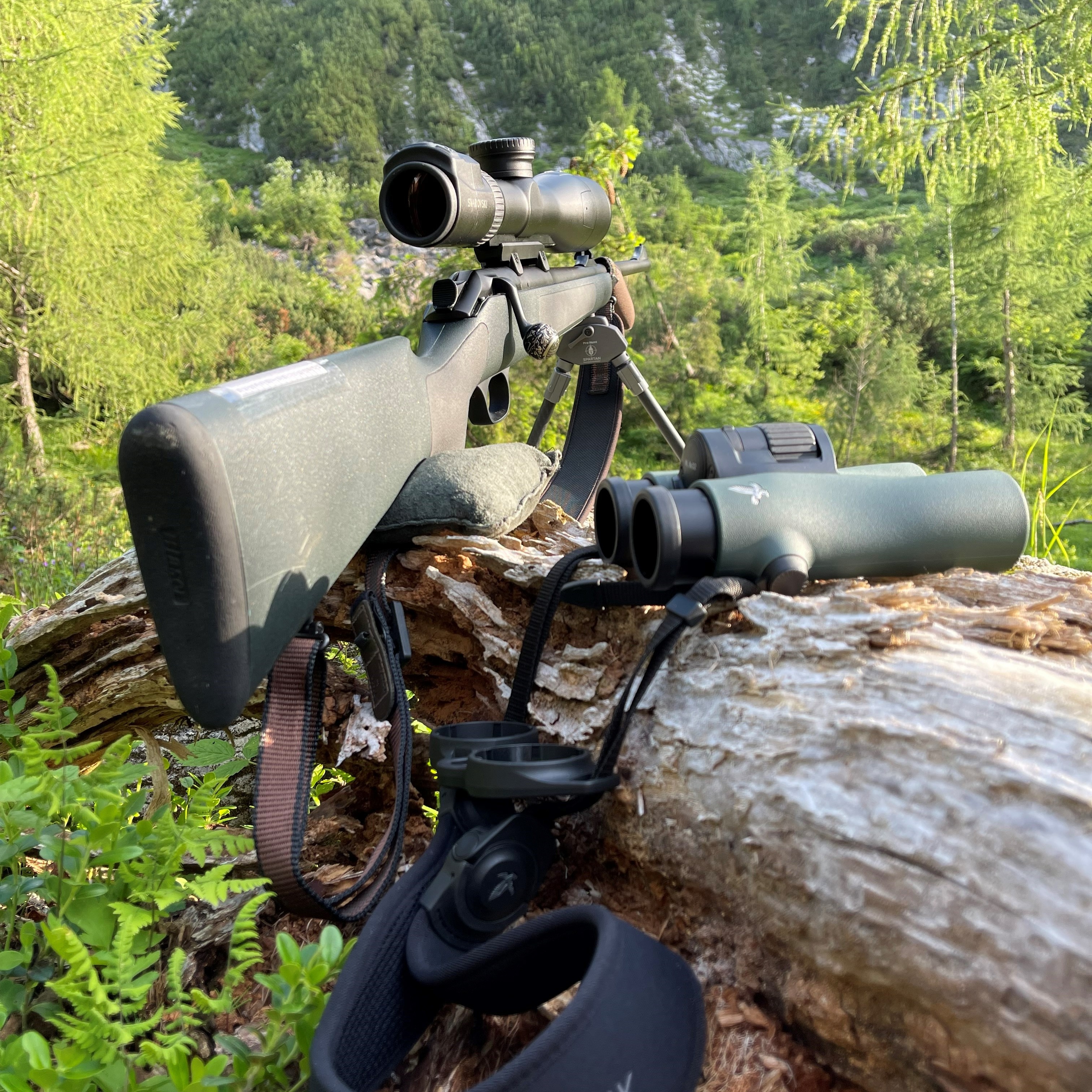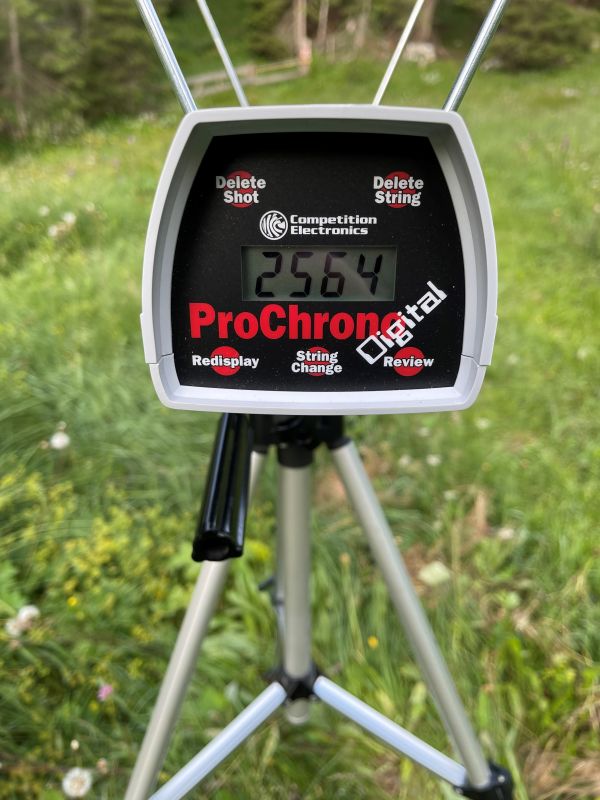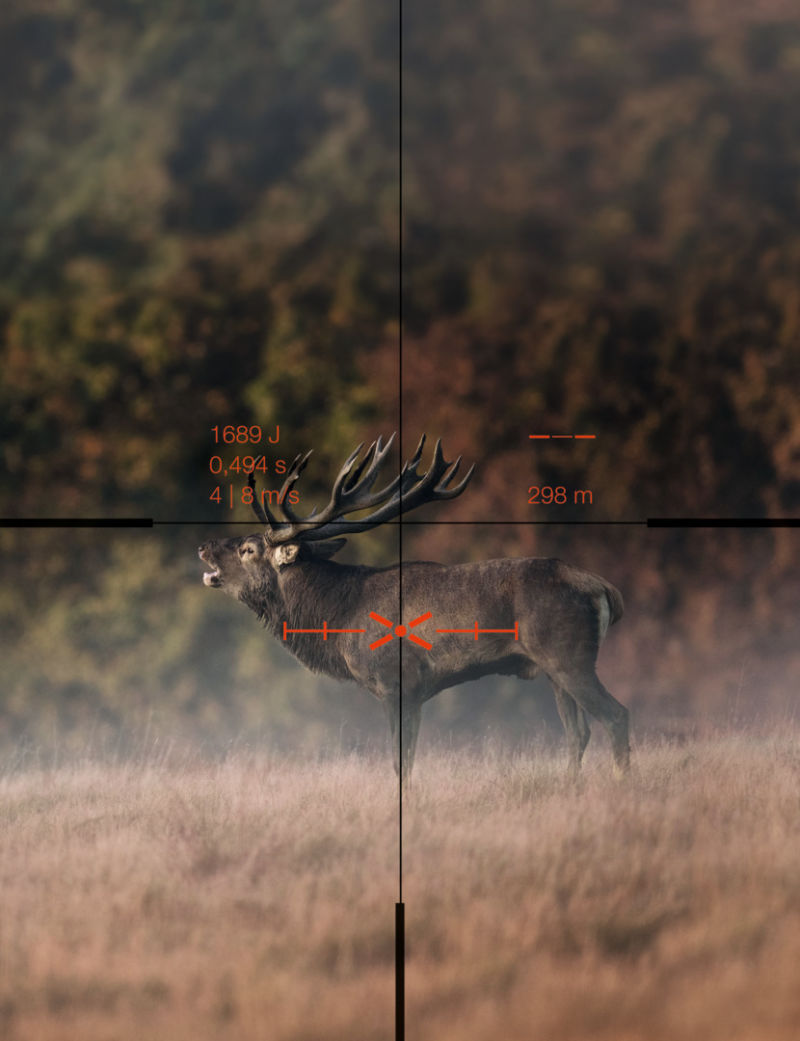In our interview, hunter and Product Manger Thomas Hofer tells us how he mounted and sighted in the SWAROVSKI OPTIK dS Gen. II for the coming hunting season.
When is the best time for you to mount a new rifle scope and sight it in?
Although it’s possible to do this all year round, spring is the best time for me.
This is because I prefer sighting in my firearm in the terrain, even if this does mean exposure to environmental influences. This then gives me enough time to test my new optics thoroughly at different distances before the hunting season really gets started again.


How did you go about mounting the dS Gen. II on your firearm?
As my dS has a rail it was pretty simple, as expected.

How do you generally go about sighting in?
#approachingdistance
I go out into my terrain at around 1,700 meters (5577 ft) above sea level. This is also a good average value for the entire terrain. I start by looking through the barrel and the glass at the target, which I set up at 50 m (55 yds) for the first attempt to roughly adjust the rifle scope. After that, it generally just needs a few clicks.
After this first shot, I adjust again, if required and then sight the firearm in at 100 m (109 yds). For the dS, I sight in on a target at 100 m (109 yds) to make full use of the advantages offered by the dS.
I can sight in precisely on the spot and the rifle scope takes care of all the rest.


The most important thing of all – and this applies to all rifle scopes, but in particular the dS – is measuring the muzzle velocity of your own firearm. I use a measuring device to do this as soon as I sight the firearm in. All other data, such as bullet weight and ballistic coefficient, can be taken from the manufacturer of the ammunition or bullets. Other important values are the height specification for sighting in the firearm and the external temperature. For my caliber 6.5x55SE BLASER R93, to which I’ve mounted the dS, I use the RWS SPEED TIP PRO with 9.1 g/140 grains.
Precision is without a doubt the top criterion for both reloaded and purchased ammunition. A high knock-down power is vital for me too, especially when hunting for chamois and ibex in the mountains, where the shooting ranges can be greater and the location and circumstances mean it’s usually important to ensure the game falls to the ground straight away. Last but not least, from my perspective as a hunter who processes 100% of his own game, the shot needs to preserve the meat.
How did you find the process of entering the ballistics data in the cell phone app and then transferring it to the dS Gen. II?
If you have the right data to hand, it takes no time at all. It was all done in two minutes. Also, the fact that I already use the SWAROVSKI OPTIK ballistics program app meant that I was immediately familiar with the dS version. It really couldn’t have been simpler.
How do you rate the options for personalizing the dS Gen. II using a cell phone app?
I have to say: the dS and therefore SWAROVSKI OPTIK offer maximum flexibility.
They couldn’t cater for personal preferences any better. There really is something for everyone there.

Which accessories do you use
With the dS Gen. II?
I use an SG scope guard. I feel this offers more protection for the rifle scope on mountain hunts, as impacts are more likely in steep terrain than when hunting in woodland or a field.
How do you train with your new firearm-rifle scope setup before you go hunting with it for the first time?
I always test it first at different ranges on “regular” targets with a bullseye.
At distances from 100–200 m, (109–219 yds) I use a bullseye of 1.5 cm (0.6 in), and from 250–450 m (273–500 yds), a bullseye of 4 cm (1.5 in), to confirm the precision.
I always shoot lying down with 2 support points, with a bag or the bipod at the front.
As soon as I’ve confirmed the precision, I then use a game target with a picture of a chamois without an aiming point, because I simply find it more realistic. Before the start of the main hunting season in August, I practice around every 2 weeks. From August onward, I’m then more involved with actual hunting.
I always try to set the chamois target up in different places so that I’m not always shooting on the level, but also practicing shooting uphill to test my equipment. I want to set things up just like in a real hunting situation and then quickly fire three shoots at the picture of the game. I then look to see where the shots have actually landed and whether the game would have been fatally wounded. I usually do this at distances of between 300 and 450 m (328–500 yds), but this doesn’t mean I would shoot at game from this distance.
I simply want to see what I and my equipment can do. Because this is the only way to learn your own limits and assess the influence of sun and wind, which are usually underestimated.


What factors come into play for you when it comes to shooting responsibly at long ranges – for example, when hunting chamois?
Like everything in life, practice makes perfect. So I like to practice on a “real” game target with a picture of a chamois, which can also be seen in a video about the dS on my Instagram account. This simply helps you get to know your equipment and your own abilities better. You can set up faster and take aim. You also know which shots you can master with high precision and which ones you can’t.
You also learn how to deal with environmental influences, such as wind on your bullet. Over time, all these tests and practice result in a learning curve that guides my actions when hunting.

About
Thomas Hofer
hunter and Project Manager Thomas Hofer was born in 1979 and originally comes from Italy. His interests revolve around hunting, nature, and cooking. After a hard day at work, he loves nothing more than getting out into nature with his dog. He became acquainted with SWAROVSKI OPTIK as a child through his father and grandfather, who were both hunters. On mountain hunts, he particularly values the combination of the NL Pure 32 with the dS GEN. II.



















